This article was co-authored by Ryan Corrigan, LVT, VTS-EVN. Ryan Corrigan is a Licensed Veterinary Technician in California. She received her Bachelor of Science in Veterinary Technology from Purdue University in 2010. She is also a Member of the Academy of Equine Veterinary Nursing Technicians since 2011.
There are 10 references cited in this article, which can be found at the bottom of the page.
This article has been viewed 20,912 times.
Bottle feeding calves is a common practice that ensures the animals receive proper nutrition. It also protects them from developing illness or disease. Calves that nurse directly from the mother can get sick drinking from dirty teats.[1] There are many things to keep in mind when bottle feeding calves. By providing enough milk or milk replacement formula daily, slowly introducing grains, preventing vitamin deficiencies, and properly weaning, your calves can grow strong and healthy through bottle feeding.
Steps
Feeding Your Calf from a Bottle
-
1Purchase or gather the appropriate feeding supplies. You'll need a two quart calf bottle with nipple and raw cow's milk or a bovine milk replacement formula, and possibly colostrum. Choose a milk replacement formula that is at least 25% protein.[2] Other supplies can include a syringe or turkey baster, which you might find helpful in the beginning when getting the calf accustomed to the bottle.[3]
- A calf bottle that holds two quarts of liquid is all you should need.
- A turkey baster or syringe can be used to introduce the calf to the milk or formula if it doesn't take the bottle initially. Squirting the milk or formula directly into the calf's mouth using the baster or syringe will help the calf realize you are feeding it. You can then try offering the bottle again
- The hole on the end of the nipple should be big enough that the calf can easily nurse from the bottle, but not so big that it drinks too fast and aspirates.
-
2Clean the calf bottle and nipple before first use and after every feeding. Whether you are using a newly purchased calf bottle or one that was previously used to feed another calf, you'll need to thoroughly clean the bottle before using. The bottle will need to be washed again after every feeding.
- To prepare for washing, remove the nipple from the bottle.
- Rinse the bottle and nipple to remove any surface dirt and milk or formula.
- Wash the bottle and nipple with hot water and your preferred soap or cleaning detergent.
- Use a brush to thoroughly wash the inside of the bottle.
- When washing the nipple, check for tears or cracks. If you notice such flaws, discard the nipple and use a new one. Cracked or torn nipples are hiding places for bacteria that can make your calf sick.
- After washing the bottle and nipple, thoroughly rinse with warm water.
- Allow the bottle and nipple to fully air dry before the next use. Try setting the bottle upside down on a rack so that any remaining water can fully drain off.
- Keep several bottles and nipples on hand so that there is always a clean, dry bottle ready to go before each feeding.
Advertisement -
3Feed your calf colostrum during its first 24 hours of life. Colostrum is important for all mammals at birth. It is produced in the breasts before the actual milk comes in and is filled with healthy vitamins, minerals, proteins, carbohydrates, fats, and disease-fighting antibodies.[4] Colostrum will help your calf develop a strong immune system.
- Calves can obtain colostrum by nursing directly from the mother cow during the first 24 hours after birth. However, that is not always possible, particularly if the mother is used as a milk cow.[5] In that case, if you do not have another source of bovine colostrum, a homemade colostrum replacement can be prepared for the calf. Calves should get 2–3 US quarts (2,000–3,000 ml) of colostrum as soon as possible after birth, and then 2–3 US quarts (2,000–3,000 ml) about 8 hours later.[6]
- To make a colostrum replacement, mix the following ingredients together: 1 cup of dry formula, 2 eggs, 1 tablespoon of honey, and 1/2 teaspoon of powdered vitamins A, D, and E. Stir the mixture into a quart of warm water. Give this homemade colostrum replacement to the calf in a bottle during its first two feedings. [7]
- In the colostrum mixture, the eggs give shine to the calf's eyes and coat, and the honey helps prevent constipation. [8]
- Wash the bottle after each use following the instructions previously mentioned.
-
4Prepare a bottle of bovine milk replacement formula (if not using milk). The formula is made by mixing a scoop of dry formula with warm water. Refer to the formula package directions to determine the exact amounts of dry formula and water to mix together for one quart of liquid. Instructions might vary slightly between formula types. Keep in mind that calves under 3 weeks shouldn't have non-milk proteins.[9]
- Add the appropriate amounts of dry formula and water to the bottle, put the nipple on the bottle, and shake to mix the contents together.
- Give your calf one quart of formula or milk for the first few weeks, after which time you will up the amount to two quarts.[10]
- If you have plenty of cow's milk available (preferably unpasteurized raw milk) from a milk cow, then you can use that in the calf's bottle rather than formula. Just fill up the bottle with milk and feed the calf.
- Alternatives to commercial formula include dried whey protein concentrate, dried skim milk, soy protein concentrate, and modified wheat protein.
-
5Give your calf the bottle of formula or milk. Place the nipple of the bottle on the calf's mouth until it opens up and begins drinking. You will need to hold the bottle the entire time while the calf is drinking.
- You can stand directly in the calf's enclosure when bottle feeding or simply offer the bottle through the fence. It is sometimes easier to stand next to the calf the first few times until it is used to the bottle. Once the calf is used to it, you can switch to feeding through the fence.
- If your calf refuses the bottle at first, you can try introducing the formula or milk by using a syringe or turkey baster. Either method will allow you to squirt the liquid directly into the calf's mouth. You can then try offering the bottle again once the calf knows to expect nourishment. [11]
- Wash the bottle after each use following the instructions previously mentioned.
-
6Feed your calf one quart of milk or formula in the bottle 2-3 times per day for the first two weeks. Some calf owners bottle feed their calves just twice a day; others prefer to do so three times daily.[12] Whether you feed your calf two or three times a day is your choice and can depend on your calf's appetite.
-
7Give your calf two quarts of milk or formula in the bottle twice a day (after the first two weeks). Continue feeding the calf two quarts at a time twice a day until the calf is four months old. At four months the calf should mainly be eating solid foods and be ready to wean from the bottle. [13]
-
8Raise two bottle fed calves together, if possible. Cows are herd animals and do best when not alone. If you only have one calf and no other cows, sheep, goats, and even horses can make good companions for your calf.[14] The calf can graze with the other animals when it is old enough to eat grass and solids.
- If raising two calves simultaneously, you can easily feed them both at the same time by holding one bottle in each hand.
-
9Check for aspiration. Aspiration is when foreign bodies or liquids are breathed into the airway. Normally, your calf should drink slowly and steadily. If you see bubbles come out of its nose or hear the calf cough, stop the feeding immediately. The calf might be drinking too fast and inhaling milk into its airway. Give the animal frequent breaks to breathe and swallow.
Preventing Vitamin Deficiencies
-
1Feed your calf only high quality milk replacement formula and grains. Feeding your calf high quality food is the best way to prevent vitamin deficiencies. Formula that is at least 25% protein and fresh grains usually provide adequate amounts of the necessary vitamins and minerals calves need to remain healthy.
-
2Provide vitamin A supplements if your calf shows signs of a deficiency. Younger calves are most susceptible to vitamin A deficiency because they have not yet built up a reserve supply of vitamins in their bodies.[15]
- If your calf has a loss of appetite, rapid breathing, joint swelling, and even weight loss, it might be deficient in vitamin A. Consult a vet who treats cows and calves before starting any treatment.
- To correct a vitamin A deficiency, administer a shot of vitamin A or add powdered vitamins to its bottle.
- Grains that have gotten wet or moldy lose some of their vitamin content and might not offer enough nutrition. Replace with fresh grains immediately.
- Calves that are deficient in one mineral like vitamin D are often deficient in others, like vitamin E, copper, manganese, selenium, or zinc.[16]
-
3Prevent vitamin D deficiency by providing alfalfa and allowing calves time in the sun daily. Vitamin D helps calves absorb both calcium and phosphorus, which keeps their bones strong. A vitamin D deficiency can lead to the development of rickets.[17]
- Regularly provide alfalfa that has been cured in the sun to prevent rickets in young calves.[18]
- Allow the calf time outside in the sun whenever possible for additional vitamin D exposure.
-
4Add finely ground limestone to the calf's grain to correct calcium deficiency. If you observe your calf chewing on rocks, wood, or other similar substances, that could be a sign of calcium deficiency.[19] Adding limestone to the grain is a simple way to increase your calf's calcium intake.
- For every ton of grain, add 40 pounds of finely ground limestone.[20]
- Continue adding limestone only for as long as your calf shows signs of a calcium deficiency.
-
5Observe your calf's behavior for signs of possible magnesium deficiency. Cows get magnesium from eating grains. Calves who are bottle fed only milk or milk replacement formula without the addition of grains at the right time, can become magnesium deficient.[21]
Weaning Your Calf off the Bottle
-
1Introduce alfalfa and fresh water after the first week of life. The calf might not show much interest in anything but the bottle at first, but it is important to keep fresh water and alfalfa nearby.[24] The calf will soon become curious and begin nibbling at the alfalfa and sipping the water.
- A salt or mineral lick should also be provided. You can find these easily at feed stores.
-
2Give the calf starter pellets after two weeks. This will help your calf get used to eating solid foods.[25] The pellets can be purchased from a feed store.
- Continue providing pellets for the calf until it is eight weeks old.
- Fresh water and alfalfa should still be provided, as well as the salt lick.
- If the calf is reluctant to eat the pellets, try putting a few in its mouth right after bottle feeding.[26]
-
3Mix starter pellets with ground feed after eight weeks. Once the calf is two months old you can diversify its solid food by adding ground feed to the starter pellets. Continue giving the calf pellets mixed with ground feed from eight to twelve weeks of age.[27]
- Ground feed can be purchased from a feed store or you can make your own.
- To make your own ground feed, mix equal parts of ground corn, wheat bran, and oats with a bit of powdered molasses.[28]
- Initially, just mix in a small amount of ground feed until the calf gets used to it. The, gradually increase the amount of ground feed as you reduce the amount of pellets.[29]
- The calf should be fed two pounds of the pellet and ground feed mixture daily.[30]
- Continue providing water, alfalfa, and salt. You can also let the calf begin grazing on green pasture grass rather than give it alfalfa.[31]
-
4Limit bottle feedings to once a day between 12 and 16 weeks of age and allow the calf to graze regularly. At this point, the calf should be given two quarts of formula or milk by bottle just once a day.[32] Let the calf pasture graze daily.
- Continue providing ground feed or grains, fresh water, and salt.
- At this point, you can choose to offer ground feed or grains without any starter pellets.
-
5Wean from the bottle completely by four months. At four months of age, the calf should be getting enough nutrition from the grains and alfalfa or pasture grass to no longer need bottles of formula or milk. You can stop giving the calf the bottle at this point. Be sure to provide enough grains (ground feed) daily based on the calf's weight and allow it out to pasture daily.[33]
Expert Q&A
-
QuestionHow old does a calf need to be to wean?
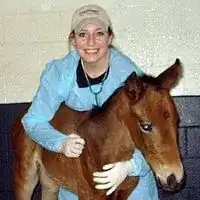 Ryan Corrigan, LVT, VTS-EVNRyan Corrigan is a Licensed Veterinary Technician in California. She received her Bachelor of Science in Veterinary Technology from Purdue University in 2010. She is also a Member of the Academy of Equine Veterinary Nursing Technicians since 2011.
Ryan Corrigan, LVT, VTS-EVNRyan Corrigan is a Licensed Veterinary Technician in California. She received her Bachelor of Science in Veterinary Technology from Purdue University in 2010. She is also a Member of the Academy of Equine Veterinary Nursing Technicians since 2011.
Licensed Veterinary Technician Calves need to be around 7 to 8 months of age in order to wean successfully.
Calves need to be around 7 to 8 months of age in order to wean successfully. -
QuestionHow much grain can a calf eat in a day?
 Ryan Corrigan, LVT, VTS-EVNRyan Corrigan is a Licensed Veterinary Technician in California. She received her Bachelor of Science in Veterinary Technology from Purdue University in 2010. She is also a Member of the Academy of Equine Veterinary Nursing Technicians since 2011.
Ryan Corrigan, LVT, VTS-EVNRyan Corrigan is a Licensed Veterinary Technician in California. She received her Bachelor of Science in Veterinary Technology from Purdue University in 2010. She is also a Member of the Academy of Equine Veterinary Nursing Technicians since 2011.
Licensed Veterinary Technician Typically calves can eat around 2 to 4 pounds of grain daily. This is fairly standard.
Typically calves can eat around 2 to 4 pounds of grain daily. This is fairly standard. -
QuestionHow long do you have to bottle feed calves?
 Ryan Corrigan, LVT, VTS-EVNRyan Corrigan is a Licensed Veterinary Technician in California. She received her Bachelor of Science in Veterinary Technology from Purdue University in 2010. She is also a Member of the Academy of Equine Veterinary Nursing Technicians since 2011.
Ryan Corrigan, LVT, VTS-EVNRyan Corrigan is a Licensed Veterinary Technician in California. She received her Bachelor of Science in Veterinary Technology from Purdue University in 2010. She is also a Member of the Academy of Equine Veterinary Nursing Technicians since 2011.
Licensed Veterinary Technician Most often, calves need to be bottle fed for 4 to 8 weeks. Occasionally even longer.
Most often, calves need to be bottle fed for 4 to 8 weeks. Occasionally even longer.
Warnings
- Feeding your calf only milk or formula for too long without introducing grains can result in vitamin deficiencies.⧼thumbs_response⧽
Things You'll Need
- 2 quart bottle with nipple
- Bovine milk replacement formula or milk
- Starter pellets
- Ground feed and/or fresh grains
References
- ↑ http://animals.mom.me/bottle-feed-newborn-calves-11101.html
- ↑ http://www.motherearthnews.com/homesteading-and-livestock/raising-bottle-calves-zmaz78mazjma.aspx?PageId=3#ArticleContent
- ↑ http://www.theprairiehomestead.com/2014/01/bottle-calf-101.html
- ↑ https://www.drugs.com/npc/bovine-colostrum.html
- ↑ http://www.theprairiehomestead.com/2014/01/bottle-calf-101.html
- ↑ https://extension.psu.edu/feeding-the-newborn-dairy-calf
- ↑ http://www.motherearthnews.com/homesteading-and-livestock/raising-bottle-calves-zmaz78mazjma.aspx?PageId=3#ArticleContent
- ↑ http://www.motherearthnews.com/homesteading-and-livestock/raising-bottle-calves-zmaz78mazjma.aspx?PageId=3#ArticleContent
- ↑ http://extension.psu.edu/animals/dairy/nutrition/calves/feeding/das-07-116
- ↑ https://extension.psu.edu/colostrum-supplements-and-replacer
- ↑ http://www.motherearthnews.com/homesteading-and-livestock/raising-bottle-calves-zmaz78mazjma.aspx?PageId=3#ArticleContent
- ↑ https://hereford.org/static/files/0112_Colostrum.pdf
- ↑ http://www.motherearthnews.com/homesteading-and-livestock/raising-bottle-calves-zmaz78mazjma.aspx?PageId=3#ArticleContent
- ↑ http://www.theprairiehomestead.com/2014/01/bottle-calf-101.html
- ↑ https://vetmed.iastate.edu/sites/default/files/vdpam/Extension/Vitamin-A-deficiency-in-Beef-Calves.pdf
- ↑ https://vetmed.iastate.edu/sites/default/files/vdpam/Extension/Vitamin-A-deficiency-in-Beef-Calves.pdf
- ↑ https://www.sciencedirect.com/science/article/pii/S002203021630707X
- ↑ https://www.sciencedirect.com/science/article/pii/S002203021630707X
- ↑ http://www.motherearthnews.com/homesteading-and-livestock/raising-bottle-calves-zmaz78mazjma.aspx?PageId=3#ArticleContent
- ↑ http://www.motherearthnews.com/homesteading-and-livestock/raising-bottle-calves-zmaz78mazjma.aspx?PageId=3#ArticleContent
- ↑ http://www.motherearthnews.com/homesteading-and-livestock/raising-bottle-calves-zmaz78mazjma.aspx?PageId=3#ArticleContent
- ↑ http://www.motherearthnews.com/homesteading-and-livestock/raising-bottle-calves-zmaz78mazjma.aspx?PageId=3#ArticleContent
- ↑ http://www.motherearthnews.com/homesteading-and-livestock/raising-bottle-calves-zmaz78mazjma.aspx?PageId=3#ArticleContent
- ↑ http://www.motherearthnews.com/homesteading-and-livestock/raising-bottle-calves-zmaz78mazjma.aspx?PageId=3#ArticleContent
- ↑ http://www.motherearthnews.com/homesteading-and-livestock/raising-bottle-calves-zmaz78mazjma.aspx?PageId=3#ArticleContent
- ↑ http://www.motherearthnews.com/homesteading-and-livestock/raising-bottle-calves-zmaz78mazjma.aspx?PageId=3#ArticleContent
- ↑ http://www.motherearthnews.com/homesteading-and-livestock/raising-bottle-calves-zmaz78mazjma.aspx?PageId=3#ArticleContent
- ↑ http://www.motherearthnews.com/homesteading-and-livestock/raising-bottle-calves-zmaz78mazjma.aspx?PageId=3#ArticleContent
- ↑ http://www.motherearthnews.com/homesteading-and-livestock/raising-bottle-calves-zmaz78mazjma.aspx?PageId=3#ArticleContent
- ↑ http://www.motherearthnews.com/homesteading-and-livestock/raising-bottle-calves-zmaz78mazjma.aspx?PageId=3#ArticleContent
- ↑ http://www.motherearthnews.com/homesteading-and-livestock/raising-bottle-calves-zmaz78mazjma.aspx?PageId=3#ArticleContent
- ↑ http://www.motherearthnews.com/homesteading-and-livestock/raising-bottle-calves-zmaz78mazjma.aspx?PageId=3#ArticleContent
- ↑ http://www.motherearthnews.com/homesteading-and-livestock/raising-bottle-calves-zmaz78mazjma.aspx?PageId=3#ArticleContent
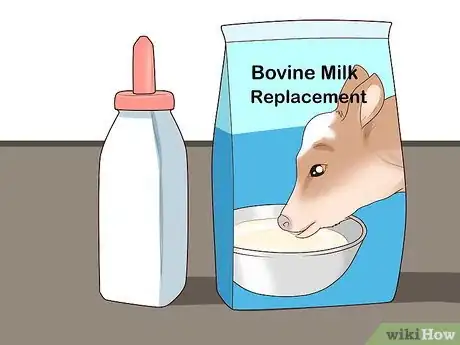
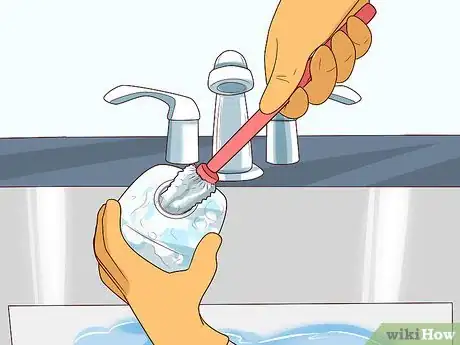
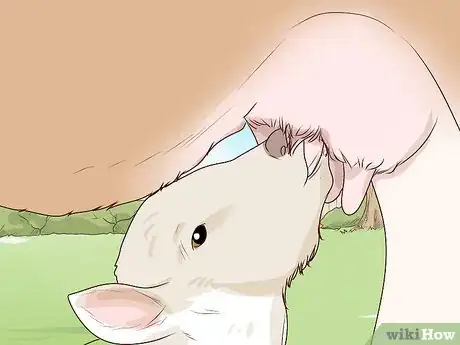
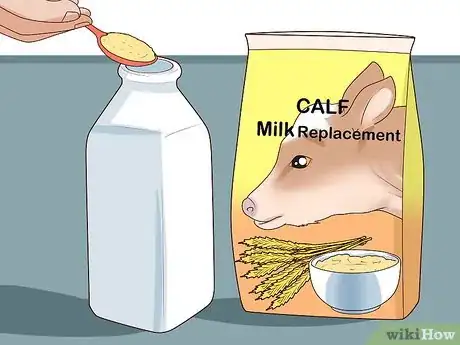

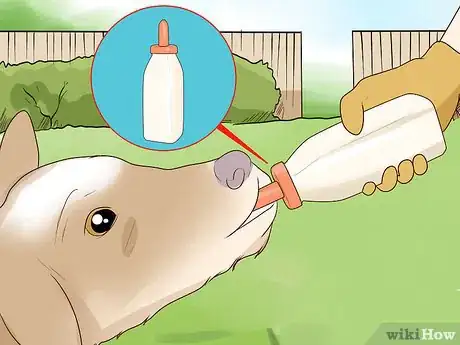
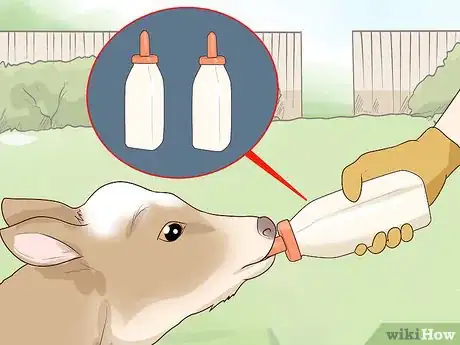
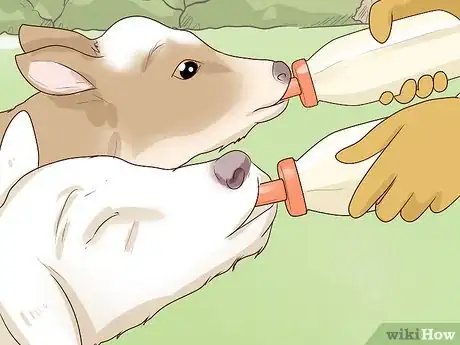
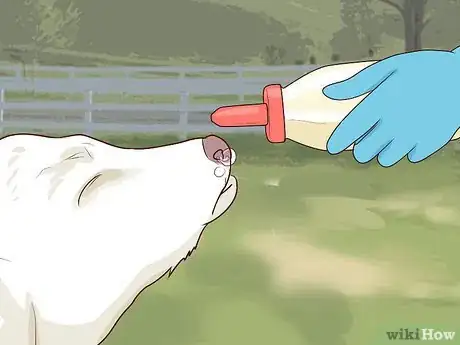
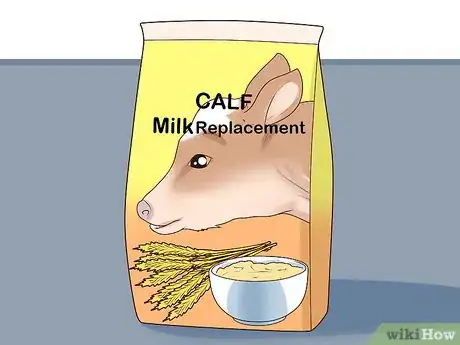
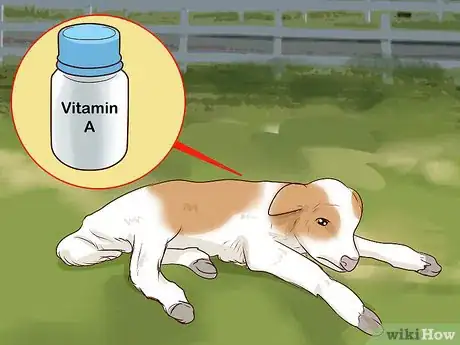
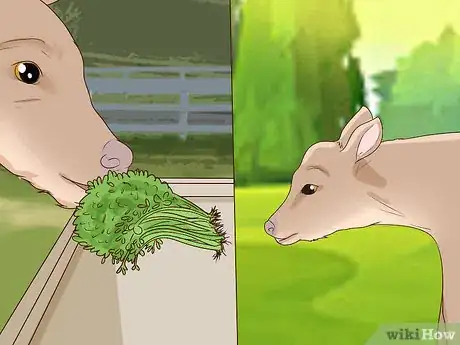
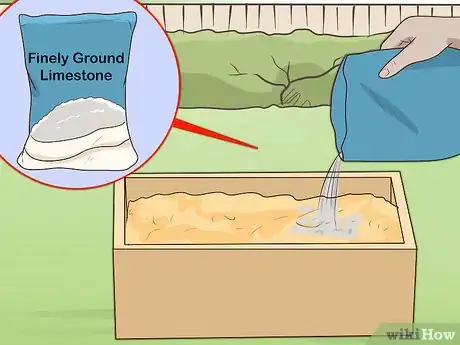
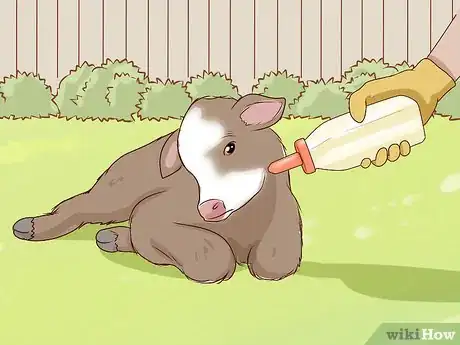
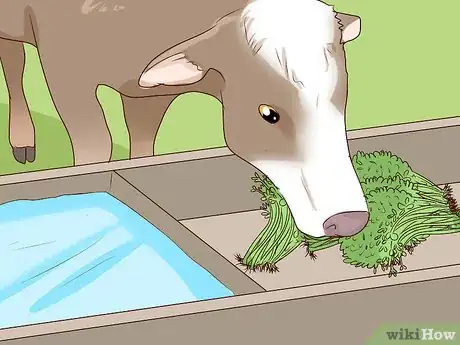
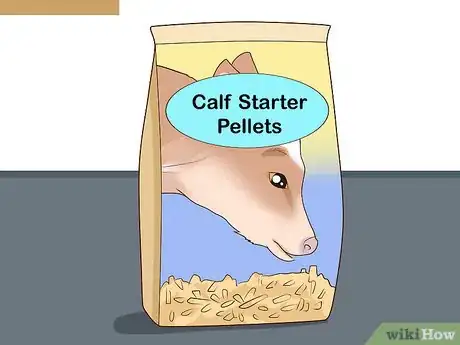
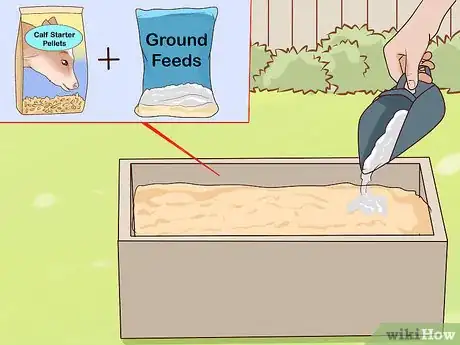
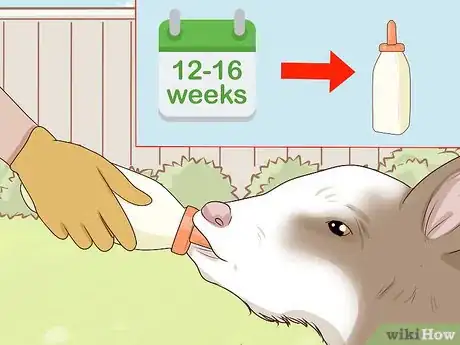
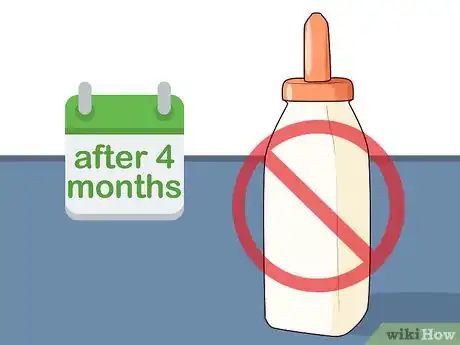
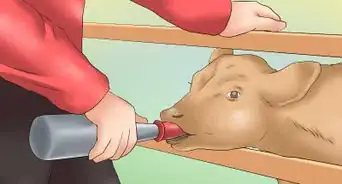
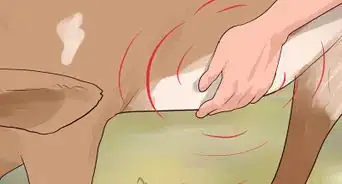





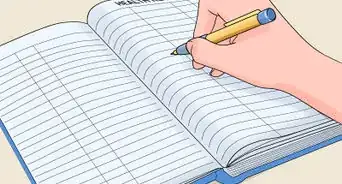
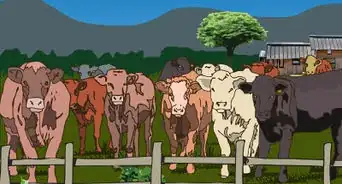
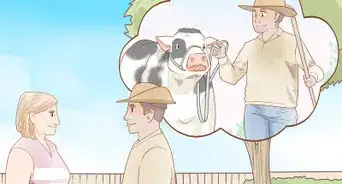
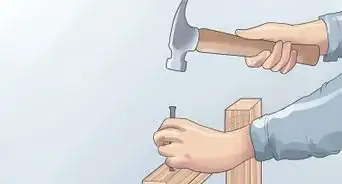

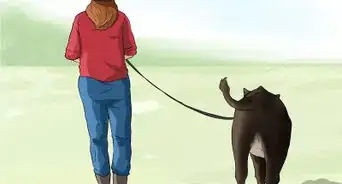

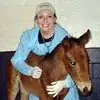






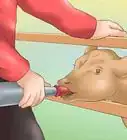
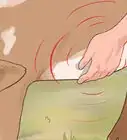

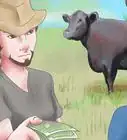



































Medical Disclaimer
The content of this article is not intended to be a substitute for professional medical advice, examination, diagnosis, or treatment. You should always contact your doctor or other qualified healthcare professional before starting, changing, or stopping any kind of health treatment.
Read More...